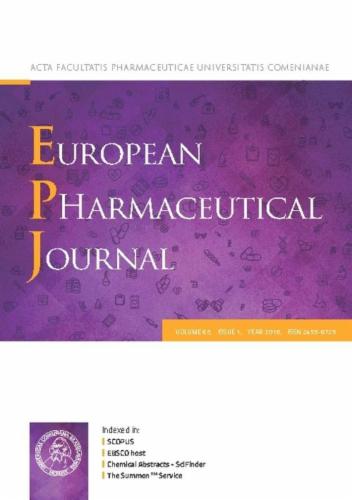pH-stat脂解模型可用于评估过饱和脂基I型制剂的性能吗?
IF 4.3
3区 医学
Q1 PHARMACOLOGY & PHARMACY
引用次数: 0
摘要
最近的一项体内研究调查了过饱和、脂质链长度、脂肪酶和沉淀抑制对I型脂基制剂(LBFs)中肉桂嗪口服吸收的影响。当前工作的目的是使用pH-stat脂解模型来研究这些配方,这是一种成熟的体外研究lbf的方法。这种方法可以测定脂肪分解的程度和脂肪分解过程中的药物分布。pH-stat实验显示,含有中链甘油三酯(MCT)的脂肪比含有长链甘油三酯(LCT)的脂肪被消化得更多。值得注意的是,在脂肪酶抑制剂奥利司他的存在下,消化减少了至少75%。XRPD测定表明沉淀过程中存在无定形的肉桂碱。水相药物浓度(体外曲线下面积(AUC))与体内AUC无相关性(R2 = 0.022)。然而,考虑胶束相的药物浓度时,相关性更强(R2 = 0.17),仅考虑mct为基础的配方时,相关性进一步增强(R2 = 0.85)。基于lct的配方相关性较差,可能是由于它们在水介质中的分散性较差。总的来说,考虑到胶束相中的药物浓度,发现基于mct的过饱和配方具有可接受的相关性。为了提高含有LCT的过饱和I型lbf的可预测性,需要讨论在水介质中观察到的分散性差是否是当前脂解工作流程的人工产物。本文章由计算机程序翻译,如有差异,请以英文原文为准。
Can the pH-stat lipolysis model be used to assess the performance of supersaturated lipid-based type I formulations?
A recent in vivo study investigated the impact of supersaturation, lipid chain length, and lipase- and precipitation inhibition on the oral absorption of cinnarizine from type I Lipid-based formulations (LBFs). The aim of the current work was to investigate these formulations using the pH-stat lipolysis model, a well-established method for in vitro investigation of LBFs. This method allows the determination of the extent of lipolysis and of the drug distribution during lipolysis. The pH-stat experiment revealed that LBFs containing medium-chain triglycerides (MCT) were digested more than those containing long-chain triglycerides (LCT). Notably, digestion decreased by at least 75 % in the presence of the lipase inhibitor orlistat. XRPD measurements indicated the presence of amorphous cinnarizine upon precipitation. No correlation was found between the drug concentration in the aqueous phase (in vitro area under the curve (AUC)) and the in vivo AUC (R2 = 0.022). However, when considering the drug concentration in the micellar phases, a stronger correlation was observed (R2 = 0.17), which further improved when only considering MCT-based formulations (R2 = 0.85). The poor correlation for LCT-based formulations could be attributed to their poor dispersibility in aqueous media. Overall, an acceptable correlation was found for MCT-based supersaturated formulations considering the drug concentration in the micellar phases. For potential improvement in predictability for supersaturated type I LBFs containing LCT, one will need to discuss whether the observed poor dispersibility in aqueous media is an artefact of the current lipolysis workflow.
求助全文
通过发布文献求助,成功后即可免费获取论文全文。
去求助
来源期刊
CiteScore
9.60
自引率
2.20%
发文量
248
审稿时长
50 days
期刊介绍:
The journal publishes research articles, review articles and scientific commentaries on all aspects of the pharmaceutical sciences with emphasis on conceptual novelty and scientific quality. The Editors welcome articles in this multidisciplinary field, with a focus on topics relevant for drug discovery and development.
More specifically, the Journal publishes reports on medicinal chemistry, pharmacology, drug absorption and metabolism, pharmacokinetics and pharmacodynamics, pharmaceutical and biomedical analysis, drug delivery (including gene delivery), drug targeting, pharmaceutical technology, pharmaceutical biotechnology and clinical drug evaluation. The journal will typically not give priority to manuscripts focusing primarily on organic synthesis, natural products, adaptation of analytical approaches, or discussions pertaining to drug policy making.
Scientific commentaries and review articles are generally by invitation only or by consent of the Editors. Proceedings of scientific meetings may be published as special issues or supplements to the Journal.

 求助内容:
求助内容: 应助结果提醒方式:
应助结果提醒方式:


